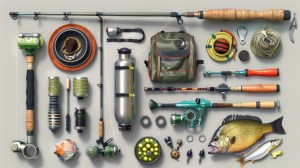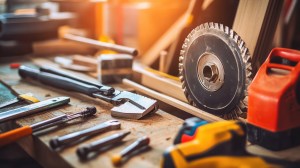How to Identify When It’s Time to Replace Your Chainsaw Bar
Chainsaws are essential tools for many outdoor tasks, from pruning trees to cutting firewood. Like any tool, they require maintenance and occasional replacement of parts to ensure optimal performance. One crucial component that often needs replacing is the chainsaw bar. Understanding when it’s time to replace your chainsaw bar can save you time, effort, and money in the long run.
What is a Chainsaw Bar?
The chainsaw bar is the long metal arm that holds the chain in place as it rotates around the drive sprocket. It plays a vital role in guiding the chain while providing stability during operation. Over time, however, wear and tear can affect its performance and safety.

Signs of Wear and Damage
One of the first signs that it might be time to replace your chainsaw bar is visible wear on its edges. If you notice significant grooves or scratches along the sides, this indicates that the bar has been subjected to prolonged use or improper tensioning of the chain. Additionally, if you see cracks or bends in the bar itself, it’s crucial to replace it immediately as these defects can lead to serious safety hazards.
Chain Fit Issues
Another indicator for replacement is when your chain does not fit properly onto the bar anymore. If you find that your chain frequently slips off during operation or does not seem taut despite adjustments, this could mean your chainsaw bar has worn down beyond repair and needs replacing.
Increased Cutting Resistance
If you’re experiencing increased resistance while cutting—requiring more force than usual—this can also signal an issue with your chainsaw bar. A worn-out or bent bar may cause uneven cuts and make operations less efficient. Consistent difficulty in cutting through wood may suggest it’s time for a new chainsaw bar.
Regular Maintenance Checks
To avoid unexpected issues with your chainsaw’s performance, conduct regular maintenance checks on both your chain and bars. Inspect them after each use for any signs of damage or excessive wear. Keeping track of how often you’ve used your chainsaw can also provide insight into when a replacement may be needed—many experts recommend replacing a saw’s bar after about 100 hours of heavy use.
In conclusion, recognizing when it’s time to replace your chainsaw bar will help maintain efficiency during tasks while ensuring safety in handling the tool. By watching for signs such as visible wear, fitting issues with your chain, increased cutting resistance, and performing regular maintenance checks—you’ll be able to keep your equipment running smoothly for all those outdoor projects ahead.
This text was generated using a large language model, and select text has been reviewed and moderated for purposes such as readability.











